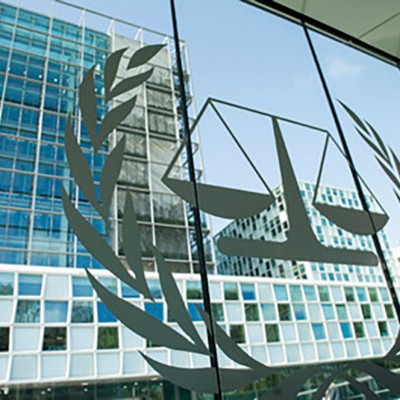Introduction
Increasingly, there have been calls to involve youth in mediation and peace processes, but are the youth a unique enough group, with needs and interests different to the rest of the society, for them to demand space in mediation processes? Some practitioners advocate for the youth to be integral to mediation processes, arguing that they have the knowledge and skills required, and they should be included – directly and indirectly – by virtue of their numbers in society. On the other hand, including the youth in mediation should not impact negatively on the process.
The United Nations Security Council (UNSC) Resolution 2250 on youth, peace and security, adopted in 2015, urges member states to include youth in peace processes.1 However, it does not provide clear guidelines on how to achieve this. The African Union (AU) has declared 2017 as the Year of the Youth, under the theme “Harnessing the Demographic Dividend through Investments in Youth”. However, there are no known policy guidelines on how to involve the youth in mediation practices in Africa. Whilst the need to balance inclusivity against efficiency in a peace process is important, inclusivity should not be superficial or merely symbolic, and the youth should be brought on board in a systematic and structured way with the aim of strengthening mediation.
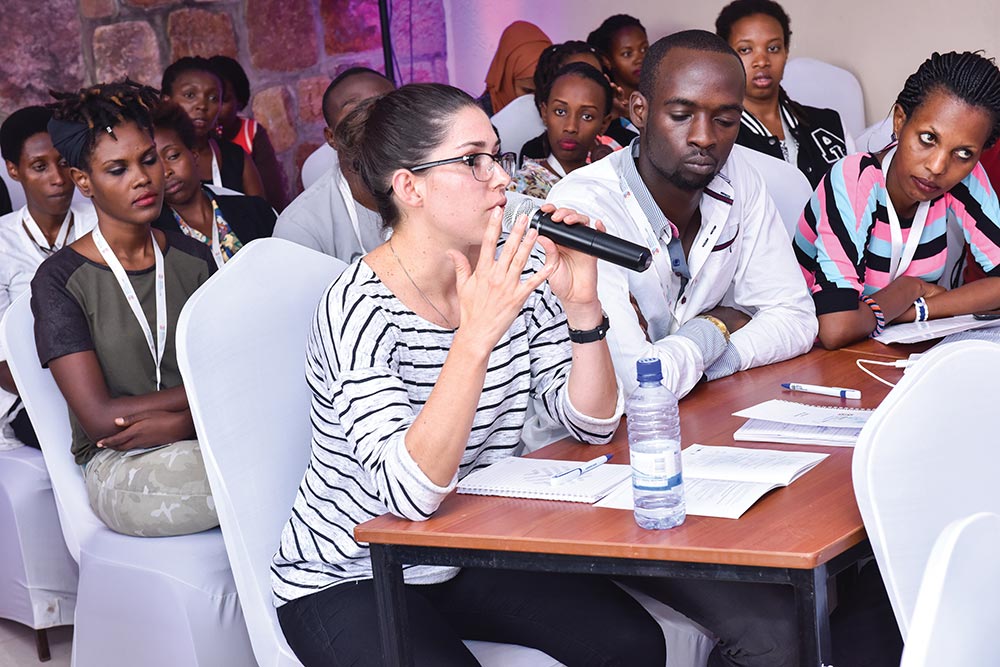
Youth in Numbers
About 65% of Africa’s total population is below the age of 35 years, and over 35% is between the ages of 15 and 35 years2 – making Africa a youthful continent. The world’s youth population (ages 15–24) currently stands at 1.2 billion – the largest number of youth ever to have existed (18% of the world’s population).3 Globally, more than 600 million young people live in fragile and conflict-affected contexts today.4 Further, young people continue to be chronically under-represented in the world’s parliaments, where only 1.9% of the world’s 45 000 parliamentarians are younger than 30 years. Africa ranks third globally, at 1.5%, in the lower and single houses, and first globally, at 0.7%, in the upper houses.5 The youth bulge is often associated with increased violence, but are countries with youthful age structures, or countries experiencing a youth bulge, more likely to experience political violence? Research undertaken shows that when the youth make up more than 35% of the adult population – which they do in many developing countries – the risk of armed conflict is 150% higher than in countries with an age structure similar to most developed countries.6 On the other hand, of the 1.8 billion young people (ages 15–297) in the world, more than 1.2 billion are living in countries where youth development has shown some improvement over the past five years.8 With the right policies, institutions and investments, developing countries can turn their large youth populations into a boon, further boosting economic growth, contributing to sustainable development and addressing the structural causes of conflict.
These statistics highlight the need to understand the dynamics of the youth and their involvement in conflict, as well as the importance of involving the youth in decision-making, conflict prevention and mediation processes – a domain where they are often marginalised. Further, the realities of young people’s lives in conflict and post-conflict settings are often not well understood. This often leads to young men being seen as perpetrators and young women as helpless victims. Further, this does not take into account the fact that different categories and identities of youth experience conflict differently. The youth are not a homogeneous group with similar needs, interests and concerns.
Inclusivity and the Youth in Mediation
The United Nations (UN) Guidance for Effective Mediation9 defines inclusivity as the extent and manner in which the views and needs of conflict parties and other stakeholders are represented and integrated into the process and outcome of a mediation effort. However, the ambiguity of the term “inclusivity”, and the resulting range of interpretations and underlying assumptions on what, who, how, why and when, further complicates the objective of including the youth in mediation processes. Broadening participation in mediation and negotiation can strengthen the effectiveness of these processes, and the quality and sustainability of the agreements.10 However, a process can be inclusive and still fall short of representing the different views and sections of society.
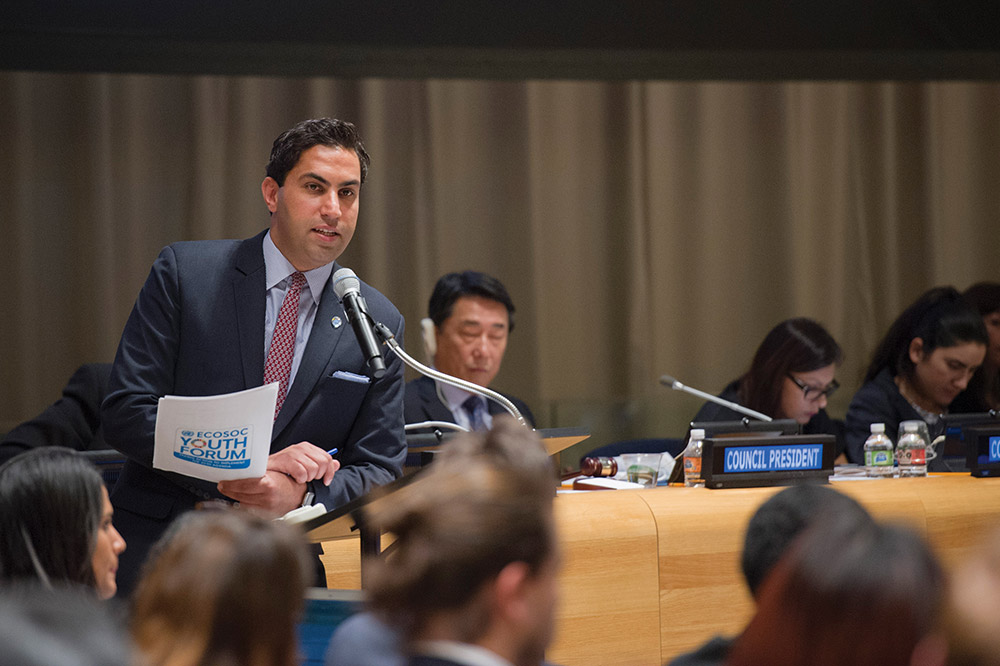
The youth can be involved in mediation processes in different ways, including direct representation at the negotiation table, as part of mediation teams, as observers, in official and informal consultative forums, in post-agreement mechanisms, and in public participation as part of “pressure groups”. They can also be witness and signatories to peace agreements. Another avenue for engagement is being informants, experts and advisors to the mediation teams. One form of engagement that remains improbable for the youth, especially in official mediation processes, is being the lead mediator or negotiator.
By including the youth, the mediation process seeks to include actors traditionally alienated from political power. This inclusion also increases the level of ownership by the youth of the peace process and on the implementation of the agreements. The youth also have better access to their peers and can support peace processes by facilitating dialogues among the different youth categories and identities. Recognising the agency of youth in conflict prevention and resolution, in 2016, a group of seasoned UN, AU and European Union (EU) special envoys and mediators emphasised the need to involve the youth more systematically and meaningfully in all tracks of mediation.11
Guiding Frameworks on the Involvement of the Youth in Peace Processes in Africa
Besides the recently adopted UNSC Resolution 2250, the UN has developed the System-wide Action Plan on Youth and established the Office of the Secretary-General’s Envoy on Youth. Other frameworks include the Guiding Principles on Young People’s Participation in Peacebuilding and the UN Guidance for Effective Mediation. At the regional level, besides designating 2017 as the Year of the Youth, the AU has instituted frameworks and mechanisms including the African Youth Charter and the AU Youth Division, as well as various human rights and peace frameworks. National youth policies at the member state level are some of the mechanisms that can be used to open up spaces for the youth to engage in peace processes. There are currently 32 countries in Africa that are known to have national youth policies.12 In some countries, the youth are a part of national infrastructures for peace. Questions often raised include whether these youth participate in the actual peace processes, in what capacity and form, and whether their presence, input and recommendations are taken into consideration during the talks and in developing and implementing the agreements reached.
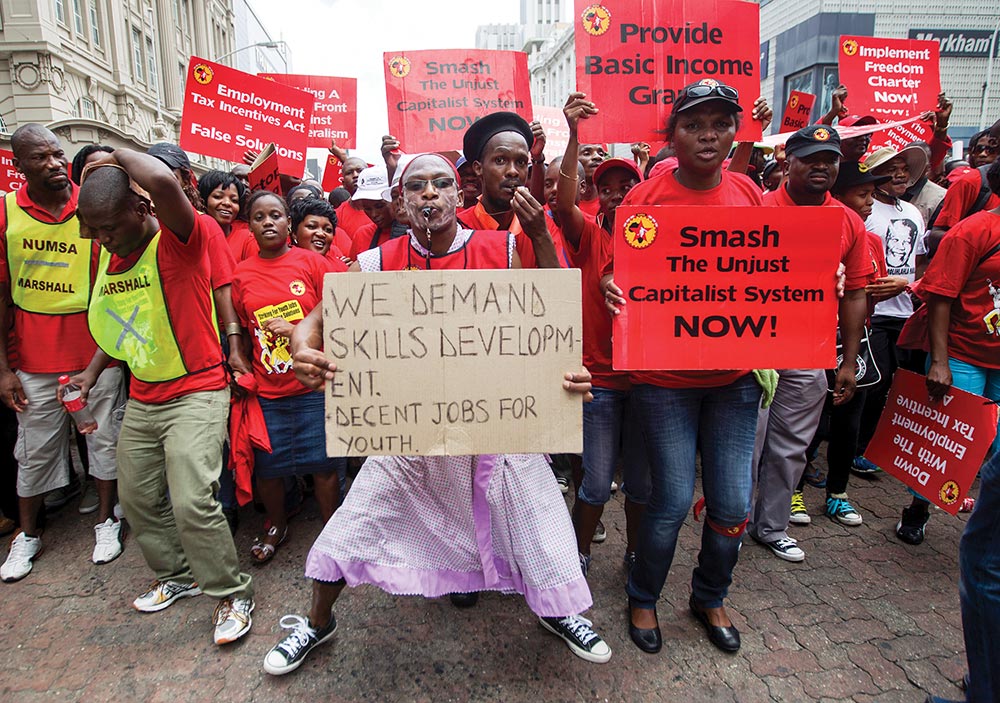
Youth Involvement and Engagement in Mediation
Youth in their different categories – whether as individuals, student leaders, youth representatives in political parties, youth groups and youth in civil society – have contributed in different ways to conflict prevention and resolution.
Consultative forums: Through these forums, the youth have provided key information to mediators, helping them to understand the issues behind public positions. They have also facilitated dialogue among their peers, bringing to the fore the needs, interests and concerns of the youth. This was the case in the 2005 Sudan peace process, where Lazaro Sumbeiywo – as the lead mediator for the process – organised consultative forums with the youth. In another example, under the framework of the International Conference on the Great Lakes Region (ICGLR), the youth were brought to the table through the Regional Youth Forum representation, which was established as an institutional mechanism to ensure the full participation of the youth in the work of the organisation for peace, stability and development in the region. This enabled the youth to select their representative(s) to the regional summits or peace talks on the Burundi and Democratic Republic of the Congo (DRC) conflict situations.13
Witness and signatories: Kenya’s Nakuru County Peace Accord, signed in 2012, was an effort to end the electoral violence that had been experienced previously in Nakuru during the 1992, 1997, 2002 and 2008 election years. In the Accord, the elders express that they will engage with youth groups.14 The Accord also categorically highlights youth as part of the signatories to the agreement.
Inclusion of a youth agenda in the agreement: Addressing youth issues such as unemployment is evident in agreements like Kenya’s 2008 agreement.15 Burundi’s 1994 agreement emphasised the education of the population, especially young people, in the values of peace and tolerance, as well as respect for life and other democratic values.
Peer mediation: This is an approach used to introduce youth to the concept of non-violent resolution of conflict in schools and at a community level. In Kenya, more than 10 schools have mediation clubs, with teachers and school administrators involved.16
Long-term approaches to building capacities for engagement in peace processes: Another approach that has been used to prepare the youth for engagement in peace and social change is emerging leaders training. This intensive leadership training builds the confidence and capacities of the youth, further empowering them to take a more active role in decision-making, community transformation, sustainable peace and the promotion of their rights. Other initiatives that have sought to build youth leadership capacity include the Model AU and Model UN, through simulations of both institutions that bring together youth from across Africa and the world to assume roles of African and global leaders, working to tackle issues affecting the African continent and the world. In some countries, such as Morocco, associations like the Moroccan Association of Young Mediators (Assocation Marocaine des Jeunes Médiateurs) have been established to harness and build the capacity of the youth in mediation and conflict resolution, and also to contribute to the creation of a culture of participation, dialogue and tolerance.
Gender, Youth and Mediation

During periods of intense conflict, existing inequalities between women and men are exacerbated. While violence has a negative and long-lasting impact on young men and women, the types (and targets) of violence suffered by young people is highly gendered. Young women and girls, as well as those who are the poorest among young people, are hardest hit by violent conflicts.17 UNSC resolutions 1325 (2000) and 1889 (2008) call for the increased participation of women in peace processes, including in decision-making. More often, young women are at a double disadvantage, because of their gender and age. When women are involved in mediation processes, they are often seasoned women with decades of experience. Some examples include President Ellen Johnson Sirleaf of Liberia, Betty Bigombe, Catherine Samba Panza and Graça Machel. Young women face cultural stereotyping, as peace processes are considered a man’s domain. In developing peacemaking strategies and policies, there is the need to ensure consistent attention to gender equality and young women’s participation. Often, training for women by the mandating organisations target diplomats or seasoned women, leaving no (or limited) slots for young women interested in mediation. There is therefore a need to identify strategies to reach out to young women and provide mentorship in mediation.
Challenges Hindering Youth Involvement in Mediation
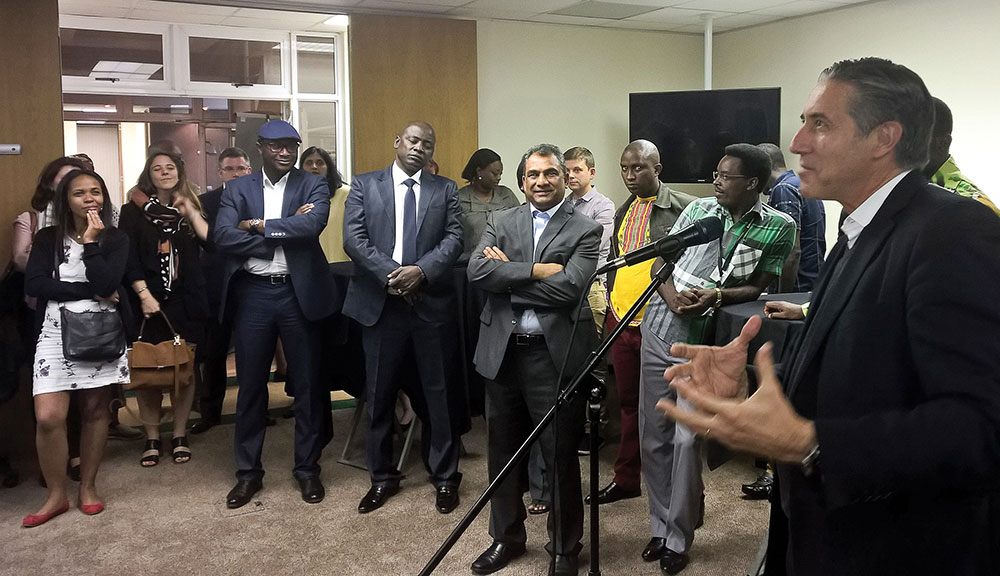
Most mediators are often (former and current) heads of state, senior military officers, career diplomats, seasoned experts and elders, and religious or traditional leaders with extensive experience in leadership, preventive diplomacy and conflict management. These criteria seem to lock the youth out of mediation, particularly in any leadership role, often leaving the youth to play a supporting role in such processes. This support role often exists parallel to consultations that feed into formal mediation processes – but even so, there is no guarantee that the outcome of the parallel consultations will be incorporated into the main discussions or agreement. The appointment of mediators is also often political, especially with most track one mediation processes that address challenges around political transitions involving heads of state and high-level political actors.
Intergenerational relations are often strained in the aftermath of conflict. Young people may distrust or blame adults for the violence, and adults may blame the youth or see them as a threat. In the African context, the youth are often considered immature, disruptive, not having the memory of war, and lacking the skills and experience to be effective mediators or to engage on par with the elders. Further, there are no guiding frameworks for the involvement of youth in peacemaking, and no systematic proactive strategies for youth inclusion in mediation. Thus, any involvement of the youth in mediation is often ad hoc. Noting the different categories and identities of the youth, it is difficult in some cases for the youth to come together as a group to develop a common youth agenda that can be shared with the mediators.
The youth lack experience in mediation, which limits their engagement in technical teams and in implementation bodies such as ceasefire monitoring teams, or truth and reconciliation bodies. Mediation has been considered an elite process, and the socio-economic status of the youth limits them from engaging in formal peace processes. Further, political processes are not easily accessible to young people, with some of these processes linked to political and military elites. In some cases, the participation of youth is only symbolic, where their opinions are manipulated or excluded from decision-making processes. Where they are part of the discussions, their substantive representation, impact and influence in the process is hardly felt or seen.
Where the youth are given the space to engage in peace processes, in most cases those who are involved are the elite youth – not necessarily youth at the community level or in rural areas, who often have limited education and take up arms to fight or are easily manipulated. This was the case in the Sudan peace process, where the youth were reported to have lost their impartiality during the peace discussions in 2005.18 There is a lack of awareness on the existing capacities of youth mediators, and thus a need to further increase efforts to document such experiences. Further, the youth lack sufficient and sustainable funding to support peace processes directly or indirectly.
Recommendations for Better Engagement of the Youth in Mediation
The engagement of the youth in mediation processes is essential to ensure sustainable and inclusive peace. The following are recommendations for direct and indirect engagement of the youth in mediation:
- Create opportunities for job shadowing for the youth by pairing them with experienced mediators. This is a platform that allows the youth trained in conflict resolution to put their skills and knowledge to practice. Such opportunities could include seconding trained youth to support mediators or special envoys, who often have a lean team.
- Establish youth committees, such as in the Central African Republic, made up of youth from all the negotiating parties. This can create more space for the youth to engage in peace processes.
- The youth must be trained in mediation and on thematic areas such as elections, governance, rule of law and gender, among others. They should also be taken through simulation exercises, scenarios and policy workshops on mediation. This can be done through programmes such as the Model AU and Model UN.
- Promote innovative accountability and transparency mechanisms for governments at all levels to address youth exclusion and marginalisation. This is key to opening the space for youth engagement in peace processes at local and national level.
- Organise intergenerational dialogues between the youth and seasoned mediators and leaders, to provide a learning platform for the youth. This will bridge the intergenerational experience gap in mediation.
- Establish collaborative relationships between youth and decision-makers, which will contribute to a coordinated approach in supporting peace processes.
- Deliver mentorship programmes for younger women where “older”, experienced female and male mediators mentor younger or less-experienced women peace practitioners.
- Strengthen an evidence-based research approach on the positive contributions of the youth to peace processes. The evidence on the roles of youth in peacemaking remains limited.
- Comprehensive analyses of the different youth identities and interests reduces the risk of homogenising the youth and can lead to a more informed, inclusive process.
- At a policy level, the UN, AU and regional economic communities/regional mechanisms (RECs/RMs) should develop action plans or guidelines on how to engage the youth in mediation to support the implementation of legal frameworks. Further, developing roadmaps to implement these frameworks will bring more practice to the policy.
- Peer mediation should be encouraged in schools and communities, linking these efforts to the work of the elders and other actors in the community.
- Information technology and the media should be used to promote youth engagement in mediation processes, parallel to initiatives that emphasise personal contact.
- There should be increased technical support and funding for youth who are supporting peace processes.
- In-depth analysis on the phases of a peace process, and identification of the key entry points for the youth, should be undertaken.
- Sensitisation of institutions should be undertaken to ensure that policymakers further understand the dynamics of the inclusion of the youth.
- Establish mechanisms for the dissemination of good practices and knowledge to inform inclusion of youth in peace processes.
Conclusion
The youth can be the custodians of peaceful generations. They should be key agents for social change, peace, economic development and technological innovation. However, while there is consensus that involving the youth in mediation is useful in strengthening the legitimacy and sustainability of peace agreements, there is still a lack of clarity about how this involvement is defined and achieved. Thus, there is a need to further interrogate how to operationalise inclusivity, more particularly for the youth and their interests. In developing strategies and policies, we should be aware of the misconception that youth are either victims or perpetrators, or only a risk factor – and draw upon the increasing evidence that demonstrates that the youth can be peaceful agents of change, including in mediation. It is an indisputable reality that women are at the margins at the peace table, and more needs to be done to increase the number, space and capacities of young women engaging in peace processes.
Endnotes
- United Nations (UN) (2015) ‘Security Council Unanimously Adopting Resolution 2250 (2015), Urges Member States to Increase Representation of Youth in Decision-making at All Levels’, Available at: <http://www.un.org/press/en/2015/sc12149.doc.htm> [Accessed 14 December 2016].
- The UN, for statistical consistency across regions, defines “youth” as those persons between the ages of 15 and 24 years, without prejudice to other definitions by member states. On the other hand, the AU defines youth to be between the ages of 15 and 35 years. See African Union Commission (AUC) (n.d.) ‘African Union Youth Division’, Available at: <https://www.africa-youth.org/>; and United Nations Educational, Scientific and Cultural Organization (UNESCO) (2014) ‘Operational Strategy on Youth 2014–2021’, Available at: <http://unesdoc.unesco.org/images/0022/002271/227150e.pdf> [Accessed 20 August 2016].
- UNESCO (2014) op. cit.
- UNDP (2014) ‘Empowered Youth, Sustainable Future: UNDP Youth Strategy 2014-2017’, Available at: <http://www.undp.org/content/dam/undp/library/Democratic%20Governance/Youth/UNDP_Youth-Strategy-2014-17_Web.pdf> [Accessed 11 December 2016].
- Inter-Parliamentary Union (2016) ‘IPU Report Reveals Chronic Under-representation of Young People in World’s Parliaments’, press release, 16 March, Available at: <http://www.ipu.org/press-e/pressrelease201603161.htm> [Accessed 24 March 2017].
- Urdal, Henrik (2011) A Clash of Generations? Youth Bulges and Political Violence. United Nations Expert Group Meeting on Adolescents, Youth and Development, Department of Economic and Social Affairs, United Nations Secretariat, New York, 21–22 July 2011.
- The Commonwealth age bracket is between the ages of 15 and 29 years.
- Commonwealth Secretariat (2016) ‘Global Youth Development Index and Report 2016’, Available at: <http://youthdevelopmentindex.org/> [Accessed 24 January 2017].
- UN (2012) ‘United Nations Guidance for Effective Mediation’, Available at: <http://peacemaker.un.org/sites/peacemaker.un.org/files/GuidanceEffectiveMediation_UNDPA2012(english)_0.pdf> [Accessed 14 June 2016].
- Paffenholz, Thania (2014) ‘Broadening Participation in Peace Processes: Dilemmas and Options for Mediators’, Available at: <http://www.hdcentre.org/wp-content/uploads/2016/07/MPS4-Broadening-participation-in-peace-processes-July-2014.pdf> [Accessed 20 June 2016].
- AUC (2016) ‘Sharm El Sheikh Declaration on Silencing the Guns – Mediation Practices and Contemporary Wars’, Annual High-level Retreat of Special Envoys and Mediators on the Promotion of Peace, Security and Stability in Africa, held from 26–27 October 2016 Sharm el Sheikh, Arab Republic of Egypt, Available at: <http://www.peaceau.org/uploads/declaration-2016-au-hl-retreat.pdf> [Accessed 20 January 2017].
- YouthPolicy.org (n.d.) ‘National Youth Policy Overview’, Available at: <http://www.youthpolicy.org/nationalyouthpolicies/> [Accessed 24 May 2017].
- Mulamula, Liberata (2017) Electronic Interview with the author on 23 March.
- UN Peacemaker (2012) ‘The Nakuru County Peace Accord’, Available at: <http://peacemaker.un.org/sites/peacemaker.un.org/files/KE_120819_NakuruPeaceAccord.pdf> [Accessed 20 January 2017].
- UN Peacemaker (2008) ‘Kenya National Dialogue and Reconciliation: Statement of Principles on Long-term Issues and Solutions’, Available at: <http://peacemaker.un.org/sites/peacemaker.un.org/files/KE_080523_Kenya%20National%20Dialogue%20and%20Reconciliation%2C%20Statement%20of%20Principles%20on%20Long-term%20Issues%20and%20Solutions.pdf> [Accessed 20 January 2017].
- ALARM-Africa (n.d.) ‘Peer Mediation & Peace Education’, Available at: <http://alarm-inc.org/what_we_do/peer_mediation_peace_education> [Accessed 24 May 2017].
- Commonwealth Secretariat (2016) op. cit. [Accessed 24 May 2017].
- Youth (identities protected) (2017) Electronic Interviews with the author on 23 March and 24 May.






